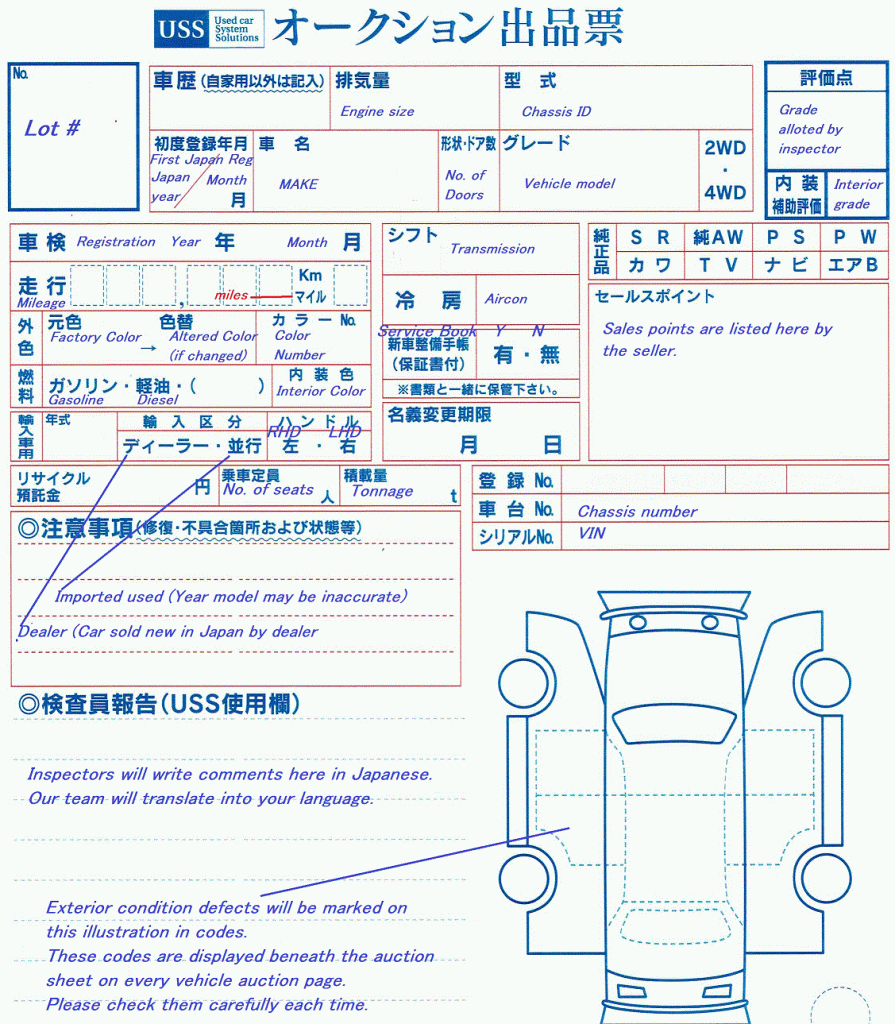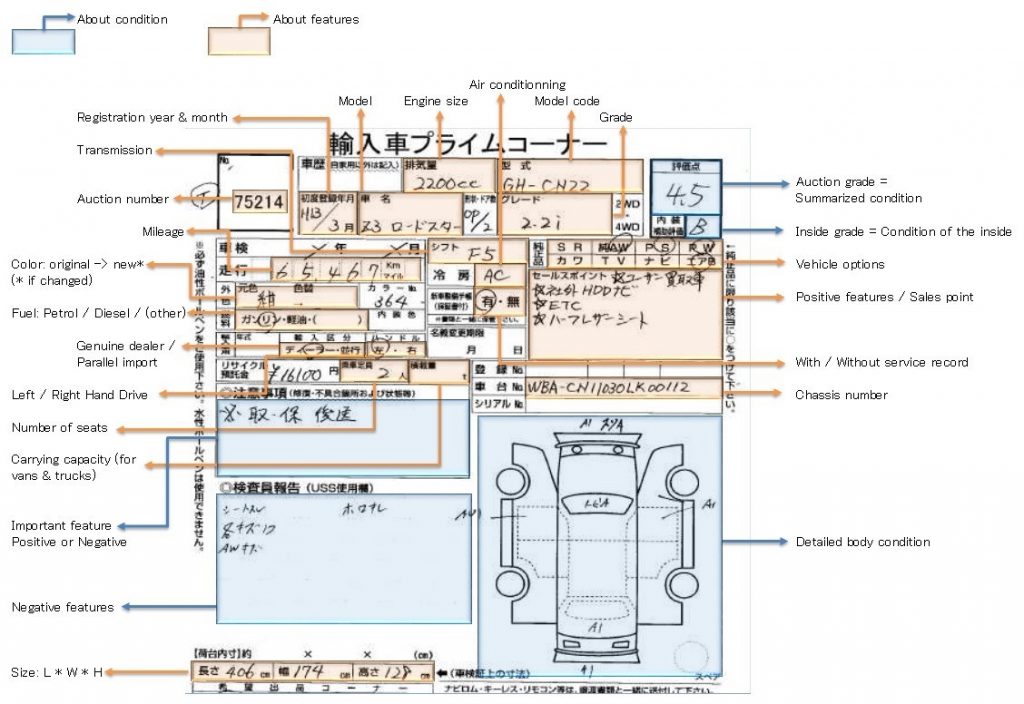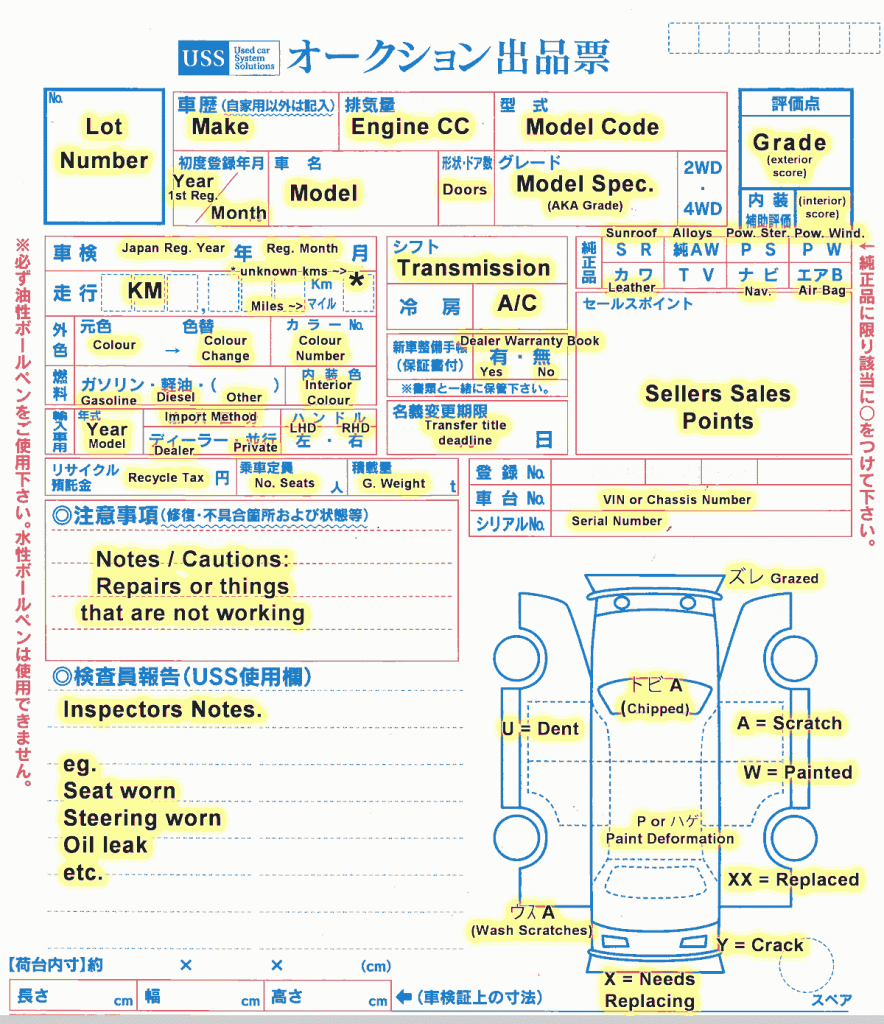Auction Sheet Overview:
The people who are living in the used car know the one golden rule of used car purchase “Don’t buy a Japanese used car without verify auction sheet a report”. The fraud risk in used cars is high because the owner can change the reading of mileage and replace the damaged parts. Do not let it be easy to purchase used cars, especially Japanese used cars.
The prices of used cars are very less in Japan and most dealers buy damaged cars at very cheap prices after replacing the damaged parts, they sell cars at very high prices. In Japan used cars and new cars sell through auction houses. Auction houses offer online buying and selling of used cars that are the most convenient way to reach a potential customer. They provide auction sheet reports with a vehicle to show the original condition to the customers.
What Is an Auction Sheet Report?

Auction sheet report is an ex-ray of the vehicle in which the condition of the vehicle is mentioned. All about body condition, mileage, damage, repair, and everything about the vehicle condition mentioned. All this information helps you to get an idea about the performance. All used vehicles in Japan go through an extensive inspection before the car auction begin. According to the inspection report, the price of the vehicle was selected. If the vehicle is in good condition, it will be expensive and if not vice versa. The car auction never begins before the mechanical inspection is complete. The vehicle gets a grade according to its condition.
What is Grading in Auction Sheet?

Vehicle prices are listed in the auction according to the grades and conditions mentioned by the inspection report. The grade is the actual meaning of full material for the customer while buying a used car. Here are the grades that are mentioned according to the vehicle condition:
- Grade S (Brand New Cars)
- Grade R (Repair Cars)
- Grade RA (Repair Accidental Cars)
- Grade 6 (Brand New with Just Drive to Auction House)
- Grade 5 (Excellent Condition Like New)
- Grade 4.5 (Very Low Mileage Car)
- Grade 4 (Low Mileage with Slight Blemishes)
- Grade 3.5 (Average Condition Car and Some Time Poor Condition)
- Grade 3 (Cheap Condition with Slight Damage)
- Grade 2 (Very Poor Condition)
- *** (Accidental Car)
The above mention information helps you to understand the grading on the auction sheet report while you buy a Japanese car.
How To Read Auction Sheet Report:

The explanation of the auction sheet report is not difficult, because only the description of the inspector is written in the Japanese language. Over All the condition of the vehicle body mention like:
- Cracks: Y1, Y2, Y3 (small crack, medium crack, large crack)
- Paint Work: P1, P2, P3 (slightly paintwork damage, medium paintwork damage, and large paintwork damage)
- Windscreen Issues: X1 (a very small crack approximately 1cm on the windscreen) R (repair crack) RX (repaired crack in the windscreen, need to replace) X (crack in the windscreen, need to replace) FW (front windscreen)
- Corrosion Mark: C1, C2, C3 (light corrosion, medium corrosion, large corrosion)
- Need to Replace or Replace Parts: X (need to replace) XX (has replaced)
- Distortion: B1, B2, B3 (minor distortion, medium distortion, large distortion)
- Dents: U1, U2, U3 (small dent, medium dent, large dent)
- Repair Marks: W1, W2, W3 (small repair/wave, medium repair, large repair)
- Rust Mark: S1, S2, S3 (slightly rust, medium rust, large rust)
- Scratches: A1, A2, A3 (small scratch, medium scratch, large scratch)
- Dimples: E1, E2, E3 (minor dimple, medium dimple, large dimple)
Conclusion:
The above mention information helps you to get an idea about how you can read or translate auction sheet reports. You can clear your concerns about the condition by its body condition, mileage, and grade. If you didn’t even understand with the help of above mention information you can get its translation report through an online website.


